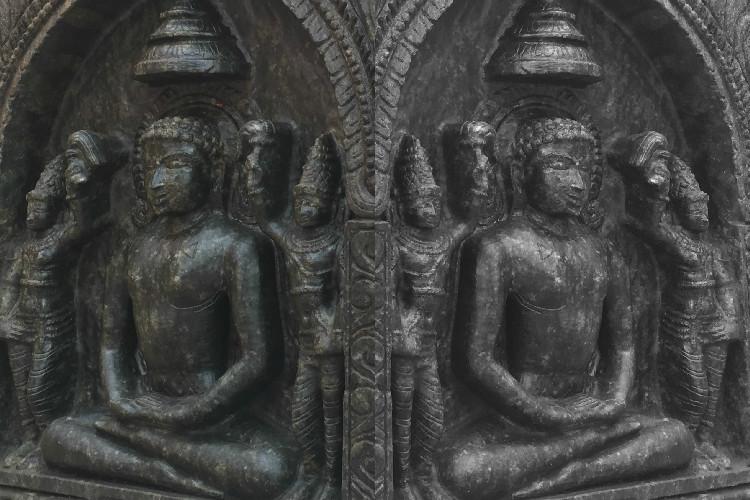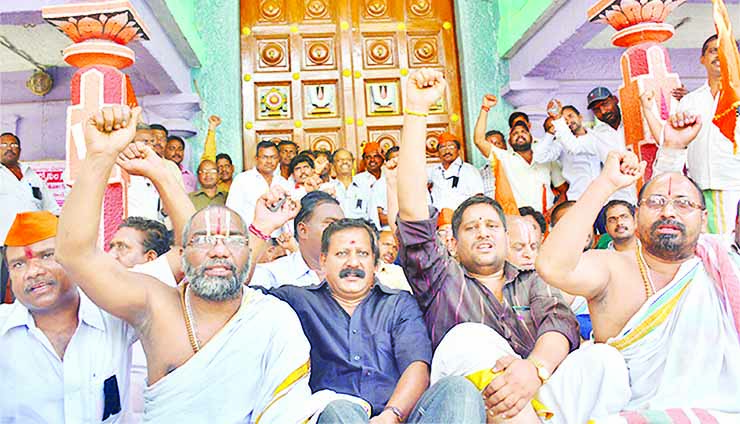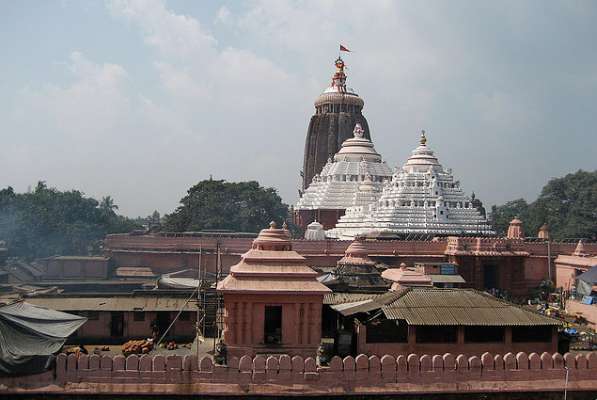Hurt By Neglect, Devotees Come Together To Celebrate Their Temple | Swarajya
In a tiny suburb of Tiruchirappalli, adjacent to the island of Srirangam, which hosts the famous Sri Ranganathaswamy Temple, stand the majestic shrines of Jambukeshwara and Akhilandeshwari in the Thiruvanaikaval Temple.
Among the many splendid structures that dot Tamil Nadu state, and a fine example of the fruits of royal patronage, Tiruvanaika, as it is also called, was built by Kocengannan, a Chola king, and is among the five elemental temple spaces, representing water.
If you don’t know about the temple, the chances of you landing there even while visiting nearby Srirangam, are small, since this temple is not as famous as the island temple. This was precisely what led a group of young people, who feel a deep connection to this shrine, to take it upon themselves to ensure that this royal sanctuary of art, divinity, and history gets its due.
I was ignorant about the shrine too, when I registered for the Srirangam trip organised by RATHAM, whose efforts I last wrote about. But now I write this story so that any temple can take inspiration and replicate the efforts of this group in giving a temple the attention it deserves.
Once you enter the shrine, the temple elephant Akhila, who stands there in all her majesty, immediately catches your attention. But so large are the mandapams, and such ornate the work, that the elephant appears tiny. But not tiny enough to be able to enter the central shrine, whose design is that way on purpose, if you believe thesthalapurana or the myth of the land.
As an elemental shrine (panchatatva sthanam) representing water, the sanctum sanctorum, which one has to enter ducking and staying low, is perennially moist as the water around the main deity, although minimal when we visited, rises above it during the monsoon.
As we looked around the temple, and as architect and conservationist Madhusudhanan Kalaichelvan took us on tour of the various inscriptions and a door that was apparently opened after decades to the sight of some vahanams (traditional vehicles of the deity), he introduced us to the person under whose supervision both the vahanams and inscriptions were now being worked on. Sudharshan, a research scholar at Annamalai University, was part of this group who were rendering services to the temple in a bid to conserve it, preserve its antiquity, and also popularise it.
Sudharshan, who was involved as a lay devotee at the Srirangam Temple, met Santosh around eight years ago, when Santosh invited him to be part of this group. Sudharshan joined them for the Shree Padam services they were rendering at the Jambukeshwara temple shrine.
Shree padathanagis or bearers of the Lord’s feet are those that offer the service of carrying the deity seated on the vahanam (vehicle) during the utsavas (ceremonial processions). This is another unique aspect of this temple as it has no restrictions like in other prominent shrines, which permit only people belonging to a particular caste or community to carry the idols (Iyers in Vaishnavite shrines and Brahmins in Shaivite shrines, for instance).
“Swamy knows and seeks only devotion. Which is why anyone can volunteer to offer this seva here,” says a gleaming Santosh, who spearheads this young group. Moreover, in today’s times, when there are few people ready to volunteer in temples or devote time to temple activities, restrictions are certainly not the way forward, he explains. “Only if we rise beyond our differences and join hands can we revive our temples, our culture,” he says.
Santosh’s childhood was spent around the temple and what began as a simple act of volunteering is now the epicentre of his life. An assistant manager at a bank and currently posted in Puducherry, Santosh visits Tiruvanaika on every important occasion, which happens to be “almost every alternate week as we have functions almost all 12 months of the year”, he says, adding that “all else including our respective careers comes second, the temple comes first”.
The group, only three of whom, including Santosh and Sudharshan, are graduates, have so far refurbished six vahanams at a cost of around Rs 6.5 lakh, every penny collected from the households in the temple town.












